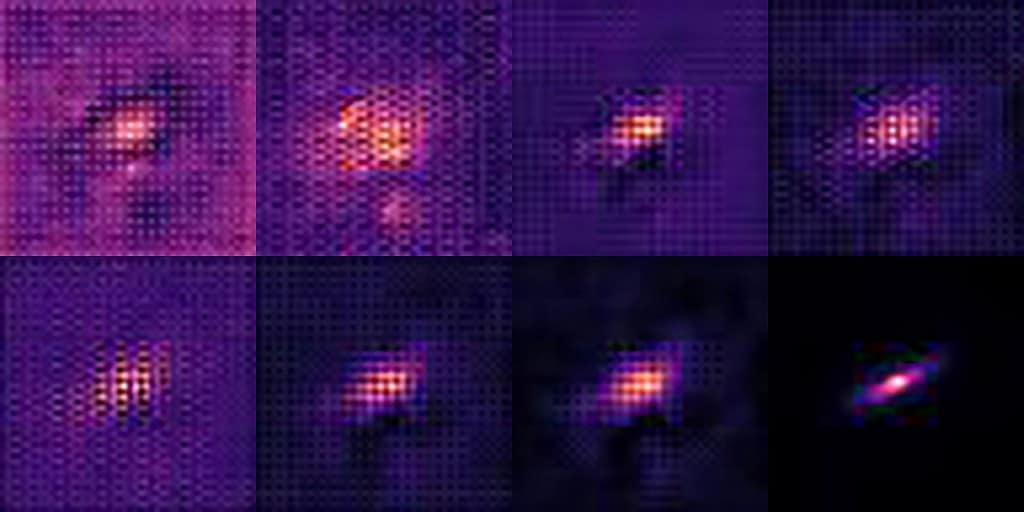
Earth’s atmosphere has long been a nuisance for astronomers, as its shifting pockets of air cause even the world’s best ground-based telescopes to produce blurry images. This, in turn, can obscure the shapes of astronomical objects and lead to errors in physical measurements essential for understanding the universe. However, researchers from Northwestern University and Tsinghua University in Beijing have developed a new strategy for addressing this issue.
From blurry to sharp
The team adapted a computer vision algorithm commonly used for sharpening photos and applied it to ground-based telescopes for the first time. They also trained the artificial intelligence algorithm on simulated data that matches the Vera C. Rubin Observatory’s imaging parameters. This means the tool will be instantly compatible when the observatory opens in 2024. The algorithm works faster and produces more realistic images than current technologies used to remove blur.
The resulting images are truer to life and blur-free, making them more valuable to astrophysicists, who use astronomical images for scientific measurements.
By removing the atmosphere computationally, the algorithm allows physicists to obtain more accurate data. This, in turn, enables scientists to collect accurate shape data and detect the gravitational effects of large-scale cosmological structures.
“Photography’s goal is often to get a pretty, nice-looking image,” said Northwestern’s Emma Alexander, the study’s senior author and an assistant professor of computer science at Northwestern’s McCormick School of Engineering. “But astronomical images are used for science. By cleaning up images in the right way, we can get more accurate data. The algorithm removes the atmosphere computationally, enabling physicists to obtain better scientific measurements. At the end of the day, the images do look better as well.”
The researchers combined an optimization algorithm with a deep-learning network trained on astronomical images. They included simulated data that matches the Rubin Observatory’s expected imaging parameters in the training images. As a result, the tool produced images with 38.6 percent less error compared to classic methods for removing blur and 7.4 percent less error compared to modern methods.
The Rubin Observatory will conduct a decade-long deep survey across a large portion of the night sky starting next year. Because the researchers trained the new tool on data specifically designed to simulate Rubin’s upcoming images, it can help analyze the survey’s highly anticipated data.
The open-source, user-friendly code and accompanying tutorials are available online for astronomers interested in using the tool. By putting this tool into the hands of astronomy experts, the researchers believe it could be a valuable resource for sky surveys to obtain the most realistic data possible.
Alexander compared the blur to looking up from the bottom of a swimming pool, where the water pushes light around and distorts it. As light travels from distant celestial bodies such as stars, planets, and galaxies, it first encounters Earth’s atmosphere before reaching our eyes. This is called “astronomical seeing.”
However, the atmosphere not only obstructs certain wavelengths of light but also causes the light to be distorted. This distortion is because the air in the atmosphere is constantly moving, even on a clear night, affecting how light passes through it.
This phenomenon is why stars appear to twinkle and why the most advanced ground-based telescopes are situated at high altitudes, where the atmosphere is thinner. Atmospheric blur can cause elliptical galaxies to appear rounder or more stretched than they really are. By removing the blur, scientists can collect accurate shape data and study slight differences in shape to understand more about gravity in the universe.
The new algorithm is a promising step towards producing clearer and more accurate astronomical images, bringing us closer to understanding the mysteries of the universe.
“Now we pass off this tool, putting it into the hands of astronomy experts,” Alexander said. “We think this could be a valuable resource for sky surveys to obtain the most realistic data possible.”


